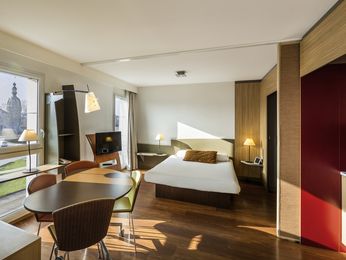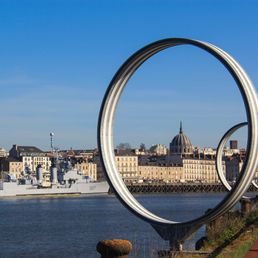Castle of the Dukes of Brittany

All our apartments in Nantes
The Chateau des Ducs de Bretagne (or Castle of the Dukes of Brittany) is an impressive austere fortress standing in the heart of historic Nantes. It is the last Chateaux in the Loire valley before the Atlantic Ocean and is surrounded by a landscaped moat and strong curtain walls with seven round bastions. It is built in the style of the Chateau of Angers and has recently reopened after 15 years of restoration and 3 years of complete closure.
The inner courtyard built from white tufa stone and featuring elegant, sophisticated sculpted façades contrast with the rough exterior walls built of granite blocks separated by layers of schist. The restoration has included the Golden Crown Tower, the main ducal residence and the Principal Governor's Palace as well as replacing the spires and the bell-tower that were missing.
The castle is known as being the birthplace of Anne of Brittany who became a duchess at the age of 11 and was then coerced into becoming the wife of Charles VIII of France in 1491 at the age of 14. Because of a clause in her marriage agreement, when Charles died in 1498 Anne was married to Louis XII, his successor, in the castles chapel. Anne had 6 children but only two survived. Claude, her eldest daughter, was married to Francis of Angouleme who became King of France on Louis XII’s death.
The Castle was begun by Duc Francois II, Anne’s father, who built most it. The Edict of Nantes was signed by Henri IV in 1598, granting Protestants religious freedom and the right to worship in a smaller royal lodging that lies to the west of the main castle. The Nantes History Museum which is housed in the Castle has been awarded the Musee de France quality mark. This high-tech museum charts the history of Nantes from Gallo-Roman times to the present day.
There are three audio guides available in English – Discovering the Castle of Anne of Brittany lasting 1hr 15 mins, a Museum tour lasting 3 hours and another documenting the slave trade and slavery lasting 1hr 15 mins. These tours can also be downloaded as smartphone application guides for free. The Castle is open every day of the year (with the exception of 4 public holidays) and entrance is free to the courtyard, ramparts and moat gardens. A fee is charged to enter the Museum.


